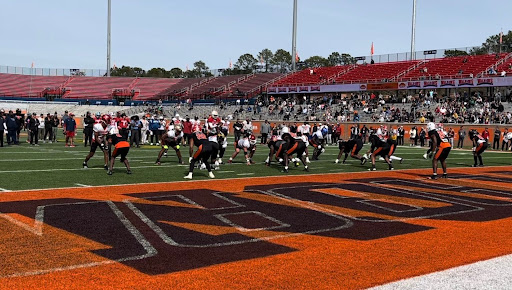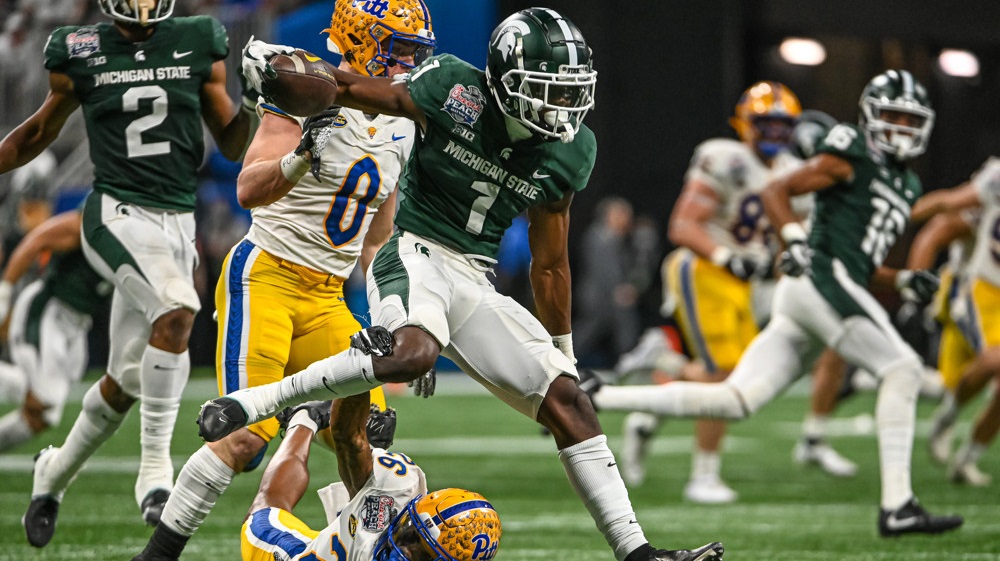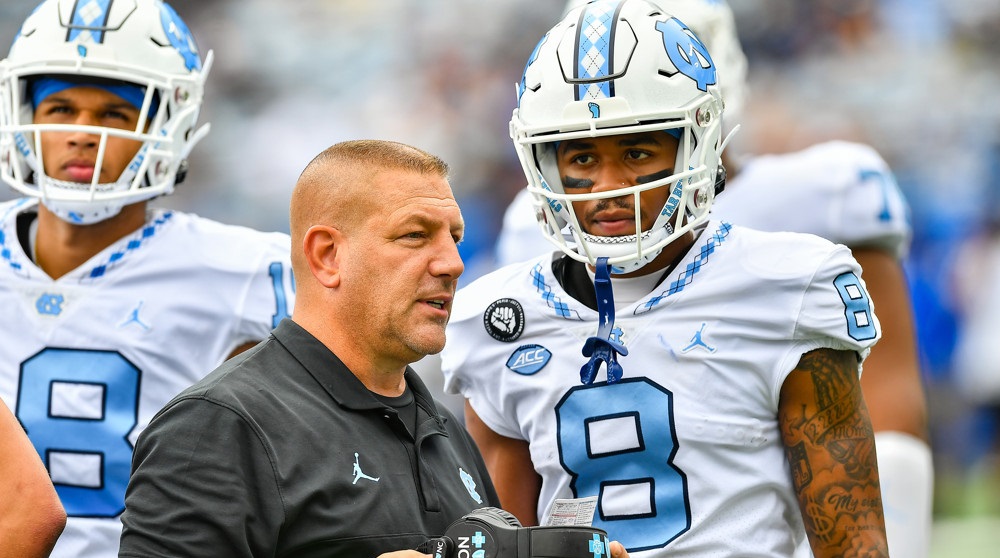At 6-4 and playing the No. 5 team in the country, South Carolina’s chances of an upset appeared bleak. Having only one healthy running back made them look even worse. But by creatively packaging its personnel and plays, South Carolina turned its shorthanded offense into a juggernaut, scoring 63 points in its upset of Tennessee.
Though short running backs, head coach Shane Beamer and offensive coordinator Marcus Satterfield had plenty of tight ends at their disposal. South Carolina would play as many as four at a time, had 2 on over 50% of its snaps, and 3 on over 25%. The Gamecocks also put one at running back. Jaheim Bell made the transition beginning this season, but has carried the ball more than 12 times in each of the past three games due to the lack of depth in the backfield. With 17 carries for 82 yards, Bell gave the Gamecocks enough of a conventional run game to convert short-yardage situations and open up the rest of the offense.
As another running option, South Carolina lined up in the Wildcat, playing Dakereon Joyner at quarterback. While the Wildcat made good use of the talent at hand, it also took advantage of what the Tennessee defense does poorly. With five defensive backs, the Volunteer defense has a defensive back to cover every receiver. But with a quarterback unlikely to throw, this leaves fewer men to defend the run.
Within the Wildcat set, the Gamecocks used motion to open up the running lanes further. But in the passing game as well, the offense used motion hoping the defense would either overreact to the motion, or lacks the numbers sufficient to defend against a play to the motion side.
With such motions, as well as certain formations, the offensive coordinator can reduce complex reads into simple if/then functions. For example, if the defense reacts one way, then throw the front-side route; else, throw the back-side route. Satterfield took this a step further by running a few plays out of only one look.
If an offense runs one play out of several different formations and motions, the quarterback will need to decipher the entire defense every time he takes a snap. But with only one formation per play, he can trust the defense will present nearly the same front and shell each time, and he needs only to confirm his suspicions once the offense gets aligned. With a consistent picture of the defensive structure, the quarterback can make quicker, sounder decisions than if he had to read the entire defense every play.
Additionally, the quarterback and offensive coordinator can prepare such packaged formations and plays specifically for their opponent. While an offense does not want to run only one play per formation for the season, game-by-game it can exploit the flaws of its weekly opponent, in this case Tennessee.
Three times out of quads South Carolina put the running back in motion, and each time it ran the same play. The first time, quarterback Spencer Rattler saw the shift to the back side and threw the front-side bubble. The final two times, in seeing the defense, most notably the backside linebacker, shift with the motion, he took one step and fired the ball to the backside hitch, gaining a first down each time.
On South Carolina’s first drive, on crucial third and fourth downs, the Gamecocks ran a curl flat concept with two stacked receivers and a tight end. The first time Rattler hits Traevon Kenion in the flat, the second he nails Antwane Wells Jr. on the curl, both for first down conversions to keep the drive alive. Two more times Satterfield would call this concept, both ending in Rattler scrambles, but the first two added 5 expected points to a drive that set the tone for the rest of the game4.
Twice in long-yardage situations the Gamecocks went with the empty backfield. Both times they called the same passing concept. Two receivers ran mesh routes, two went deep, while one ran the dig targeting the middle of the field. Each time the safeties followed the deep routes, leaving the middle of the field open for the dig and the first down conversion.
South Carolina went trips many times throughout the night, but only twice did the Gamecocks shrink their splits. When doing so, they ran a double mesh concept similar to the one they ran out of empty, only in this case looking for Jalen Brooks underneath the defense. The first time the concept did not work, forcing Rattler to scramble. But Satterfield went back to this concept late in the fourth quarter, and Brooks iced the game with his 20-yard score.
Though their one-play formations proved plenty effective, the Gamecocks also prepared a few looks with multiple possibilities. Eight times South Carolina aligned with a tight end to one side and trips to the other, excluding its Wildcat sets. Twice it ran to the tight end, twice it threw the bubble screen, and four times it threw the switch concept to the trips. With three plays, only one of which required a read, the Gamecocks could attack all parts of the field.
With simple plays also come simple adjustments. Notice the first time South Carolina ran out of this set in the video above, pulling two linemen yet unable to climb and block the linebackers. The next time they ran to the tight end, the Gamecocks pulled only one, successfully blocked the second level of the defense and gained 11 yards and a first down.
South Carolina’s gameplan does not completely explain its win over Tennessee. Spencer Rattler played a fantastic game, Jaheim Bell ran the ball better than ever, and the offensive line put forth a performance unlike any other this season. But the gameplan helped unlock its potential, focusing on execution rather than sophistication. With the optimal packaging of concepts and players, Shane Beamer and Marcus Satterfield got the most out of the Gamecocks in their biggest upset victory since 2010.



